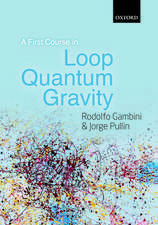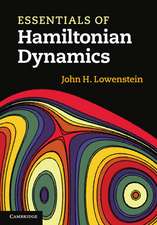Virtual Work and Shape Change in Solid Mechanics: Springer Series in Solid and Structural Mechanics, cartea 7
Autor Michel Frémonden Limba Engleză Hardback – 4 oct 2016
| Toate formatele și edițiile | Preț | Express |
|---|---|---|
| Paperback (1) | 949.10 lei 6-8 săpt. | |
| Springer International Publishing – 14 iun 2018 | 949.10 lei 6-8 săpt. | |
| Hardback (1) | 955.08 lei 6-8 săpt. | |
| Springer International Publishing – 4 oct 2016 | 955.08 lei 6-8 săpt. |
Preț: 955.08 lei
Preț vechi: 1164.73 lei
-18% Nou
Puncte Express: 1433
Preț estimativ în valută:
182.75€ • 199.14$ • 153.100£
182.75€ • 199.14$ • 153.100£
Carte tipărită la comandă
Livrare economică 23 aprilie-07 mai
Preluare comenzi: 021 569.72.76
Specificații
ISBN-13: 9783319406817
ISBN-10: 3319406817
Pagini: 366
Ilustrații: XVII, 371 p. 17 illus.
Dimensiuni: 155 x 235 x 22 mm
Greutate: 0.72 kg
Ediția:1st ed. 2017
Editura: Springer International Publishing
Colecția Springer
Seria Springer Series in Solid and Structural Mechanics
Locul publicării:Cham, Switzerland
ISBN-10: 3319406817
Pagini: 366
Ilustrații: XVII, 371 p. 17 illus.
Dimensiuni: 155 x 235 x 22 mm
Greutate: 0.72 kg
Ediția:1st ed. 2017
Editura: Springer International Publishing
Colecția Springer
Seria Springer Series in Solid and Structural Mechanics
Locul publicării:Cham, Switzerland
Cuprins
Introduction.- The System.- The Principle of Virtual Work.- What We See: the Velocities.- The Actions which are Applied to the System: the Work of the External Forces.- What We See: the Velocities of Deformation.- The Work to Change the Shape of the System.- The Work to Change the Velocities of the System.- The Principle of Virtual Work and the Equations of Motion.- Summary of the Abstract Setting to get the Equations of Motion.- Two Points on a Line.- Three Disks in a Plane.- Three Balls on a Plane.- A Deformable Solid.- Two Deformable Solids.- At a Distance Interactions: Continuum Reinforced by Fibers.- At a Distance Interactions: Continuum Reinforced by Beams.- At a Distance Interactions: Continuum Reinforced by Plates.- Damage of a Connection.- Damage of a Rod Glued on a Rigid Surface.- Damage of a Beam Glued on a Rigid Surface.- A Damageable Solid.- Two Damageable Solids.- Porous Solids.- Discontinuum Mechanics: Collisions and Fractures in Solids.- There is neither Flattening nor Self-contact or Contact with an Obstacle. Smooth Evolution.- There is neither Flattening nor Self-contact or Contact with an Obstacle. Non Smooth Evolution.- There is no Flattening. There is Self-contact and Contact with an Obstacle. Smooth Evolution.- There is no Flattening. There is Self-contact and Contact with an Obstacle. Non Smooth Evolution. Flattening. Smooth and Non Smooth Evolutions.- Conclusions.
Recenzii
“This is a remarkable textbook on the mechanics of deformable solids pertaining to thermal intervention. … The present work stands out for its phenomenological access to the subject in conjunction with the pertaining mathematical tools, the inductive art of tackling and exposing the arguments and for the elaboration of single tasks of general interest as well as of engineering relevance. The reader will find the text inspiring … .” (Ioannis Doltsinis, Mathematical Reviews, March, 2019)
Textul de pe ultima copertă
This book provides novel insights into two basic subjects in solid mechanics: virtual work and shape change.
When we move a solid, the work we expend in moving it is used to modify both its shape and its velocity. This observation leads to the Principle of Virtual Work. Virtual work depends linearly on virtual velocities, which are velocities we may think of. The virtual work of the internal forces accounts for the changes in shape. Engineering provides innumerable examples of shape changes, i.e., deformations, and of velocities of deformation.
This book presents examples of usual and unusual shape changes, providing with the Principle of Virtual Work various and sometimes new equations of motion for smooth and non-smooth (i.e., with collisions) motions: systems of disks, systems of balls, classical and non-classical small deformation theories, systems involving volume and surface damage, systems with interactions at a distance (e.g., solids reinforced by fibers), systems involving porosity, beams with third gradient theory, collisions, and fracturing of solids.
The final example of shape change focuses on the motion of solids with large deformations. The stretch matrix and the rotation matrix of the polar decomposition are chosen to describe the shape change. Observation shows that a third gradient theory is needed to sustain the usual external loads. The new equations of motion are complemented with constitutive laws. Assuming a viscoelastic behavior, a mathematically coherent new predictive theory of motion is derived. The results are extended to motion with smooth and non-smooth self-contact, collision with an obstacle, incompressibility, and plasticity. Extreme behaviors are sufficiently numerous to consider the parti pris that a material may flatten into a surface (e.g., flattening of a structure by a power hammer) or a curve (e.g., transformation of an ingot into a wire in an extruder). Flattening is an example of the importance of the spatial variation of the rotation matrix when investigating the motion of a solid.
When we move a solid, the work we expend in moving it is used to modify both its shape and its velocity. This observation leads to the Principle of Virtual Work. Virtual work depends linearly on virtual velocities, which are velocities we may think of. The virtual work of the internal forces accounts for the changes in shape. Engineering provides innumerable examples of shape changes, i.e., deformations, and of velocities of deformation.
This book presents examples of usual and unusual shape changes, providing with the Principle of Virtual Work various and sometimes new equations of motion for smooth and non-smooth (i.e., with collisions) motions: systems of disks, systems of balls, classical and non-classical small deformation theories, systems involving volume and surface damage, systems with interactions at a distance (e.g., solids reinforced by fibers), systems involving porosity, beams with third gradient theory, collisions, and fracturing of solids.
The final example of shape change focuses on the motion of solids with large deformations. The stretch matrix and the rotation matrix of the polar decomposition are chosen to describe the shape change. Observation shows that a third gradient theory is needed to sustain the usual external loads. The new equations of motion are complemented with constitutive laws. Assuming a viscoelastic behavior, a mathematically coherent new predictive theory of motion is derived. The results are extended to motion with smooth and non-smooth self-contact, collision with an obstacle, incompressibility, and plasticity. Extreme behaviors are sufficiently numerous to consider the parti pris that a material may flatten into a surface (e.g., flattening of a structure by a power hammer) or a curve (e.g., transformation of an ingot into a wire in an extruder). Flattening is an example of the importance of the spatial variation of the rotation matrix when investigating the motion of a solid.
Caracteristici
Explains how the principle of virtual work represents a tool for analysis of the mechanical effects of the evolution of the shape of a system Applies the principle of work to predict the motion of solids with large deformations Includes examples of both usual and unusual shape changes Derives equations for smooth and nonsmooth motions Includes supplementary material: sn.pub/extras


















